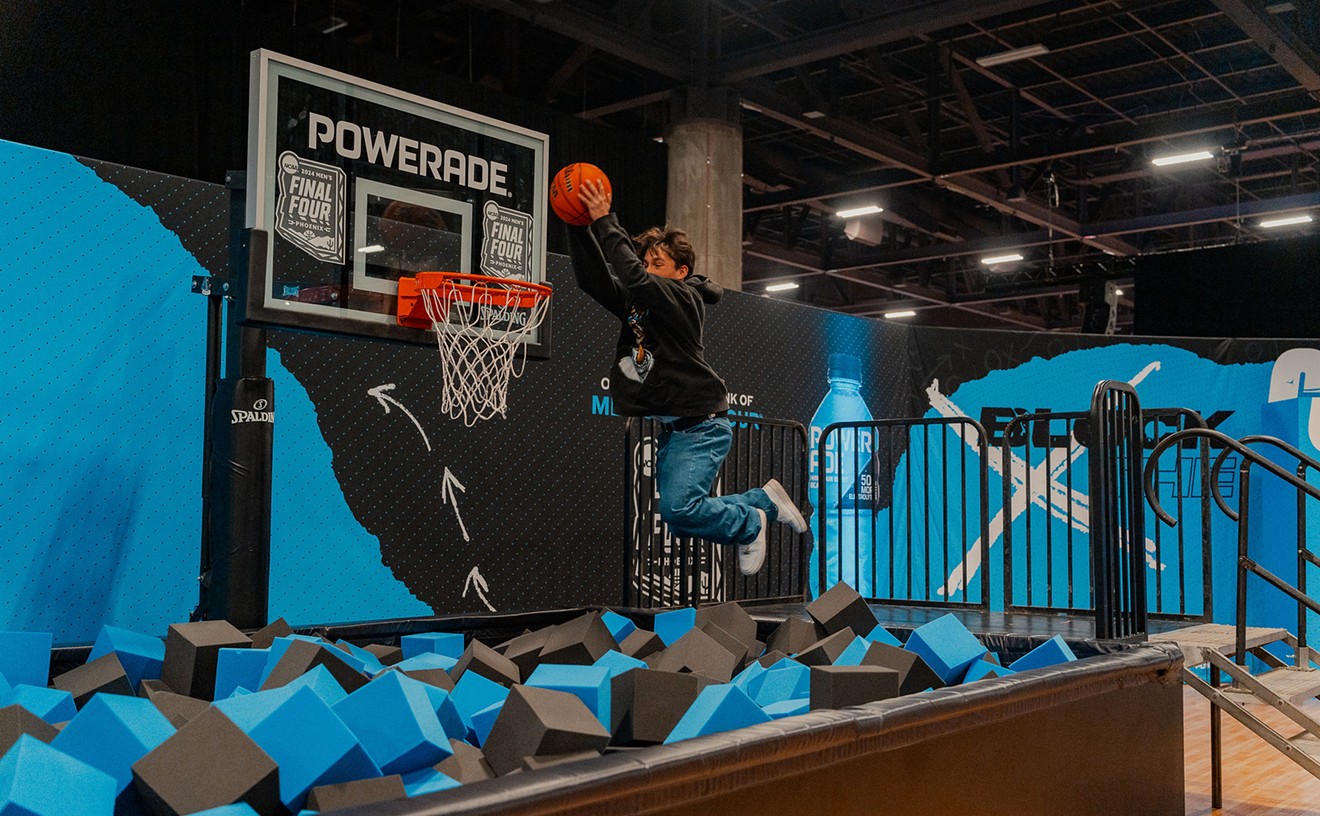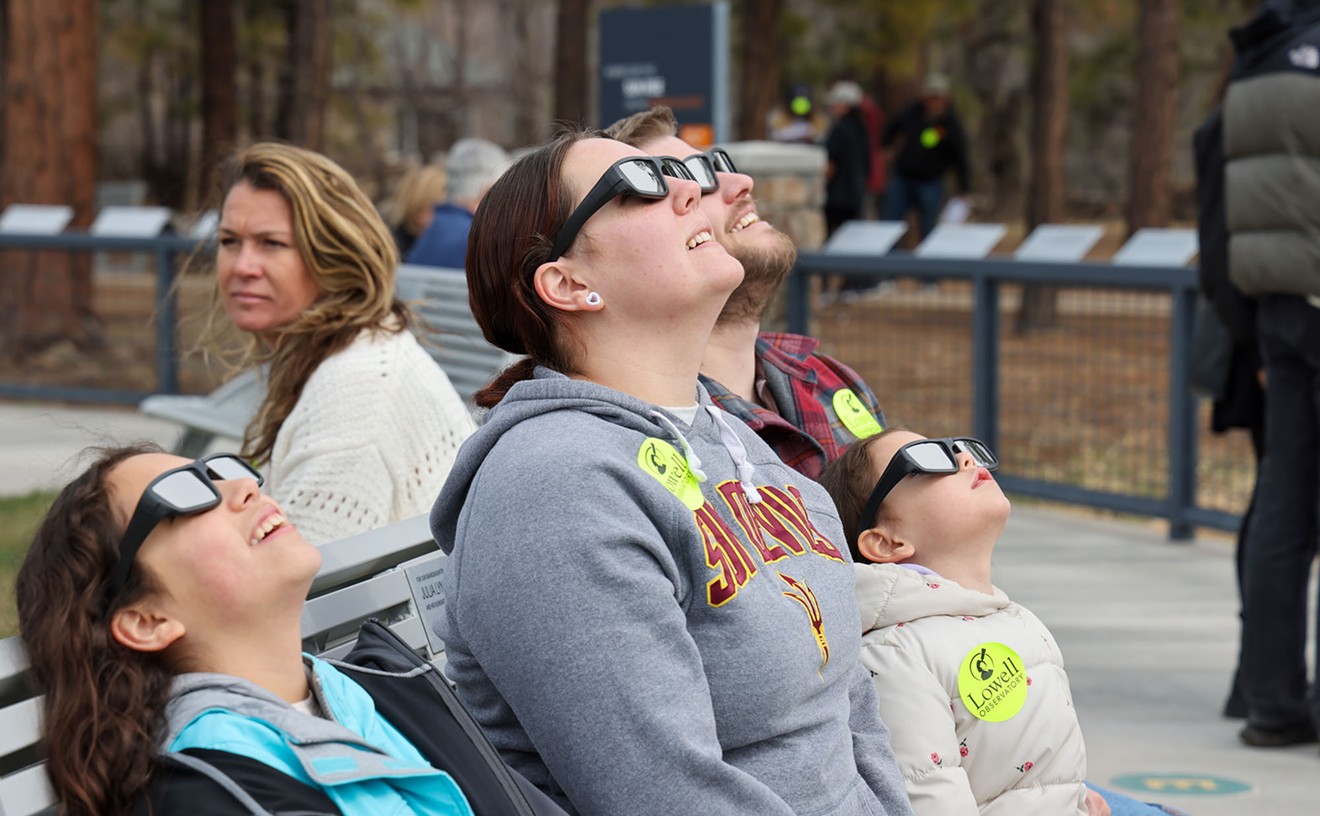On any given day, you'll find Brazilian multi-media artist Rivane Neuenschwander digging through the utterly humdrum details and detritus of daily life in search of ideas for her unusual art, as she has for the past 10 years.
Finding the extraordinary in the everyday is a specialty of this internationally recognized conceptual artist, whose work can be seen in a major mid-career retrospective titled, appropriately enough, "A Day Like Any Other" at Scottsdale Museum of Contemporary Art through June 5. A traveling show curated by New York's New Museum in collaboration with the Irish Museum of Modern Art in Dublin, "Day" is a small slice of the impressive oeuvre of an artist who, in the past decade, has managed to conjure the marvelous from the mundane.
My only criticism of the show is that there isn't nearly enough work in it to satisfy my craving for Neuenschwander's considerable conceptual capabilities.
First gaining notoriety at the beginning of the 1960s — before Neuenschwander was even born — conceptualism was an anti-status-quo art movement springing up amid vaunted American abstract expressionism, with its hard-partying, anguished painter/bad boys, most notably Jackson Pollock. Conceptualism elevated the idea behind a piece of art over the art object's embodiment of that idea. The movement also was a distinct reaction against art being treated as a commodity, which was then (and still is) being bought and sold like pork belly futures, not to mention a left jab at the inherent elitism of the art world. Thus were born "happenings" — performance art, installation work, and other mind-bending, unconstrained art forms. Sometimes, photographic or video documentation was the only evidence that the work had existed at all; in some cases, artists simply described a work or created written instructions for making it with a Descartian attitude of "I think, therefore I am and/or it's art." Try hanging that on your wall.
Like legendary Japanese artist Yayoi Kusama, Neuenschwander is obsessed with, among other discursive motifs, the infinity of repetition and the inherent power of the cyclic, often illustrated by recurring circular, oval and linear shapes. For example, in Chove Chuva (Rain Rains) (2002), she's filled an entire room with hanging aluminum buckets drilled with minuscule holes from which water slowly drips into other buckets on the gallery floor. At designated intervals, a museum staffer climbs a ladder to dump the water collected in the floor buckets back into the hanging buckets. The viewer is immersed not only in a potent visual environment of dangling metal vessels, but is forced to quietly wait for the sound of water drops to hit awaiting receptacles, creating a sort of celestial musical background score.
Circles reappear in As Mil E Uma Noites Possiveis (One Thousand and One Possible Nights) (2008), an installation covering a huge gallery wall made up of framed panels composed of myriad white circles of various sizes collaged onto black backgrounds that suggest faraway galaxies in infinite space. The tiny orbs, reminiscent of the confetti that blankets Brazilian Carnival celebrations, have been hole-punched from a copy of A Thousand and One Arabian Nights, a classic compilation of exotic Middle Eastern stories told by Scheherazade, the wife of a Persian prince, over a series of nights. Neuenschwander's version is actually a calendar marking the time her installation will be on exhibit in any given venue.
Folkloric, literary, and cinematic references abound in other work. Religious folk tradition is deconstructed and re-emerges in Eu Desejo o Seu Desejo/I Wish What You Wish (2003), an installation/performance work inspired by a Brazilian pilgrimage site in Salvador, Bahia, at which visitors tie ribbons with specific wishes or requests to their wrists and church gates; a wish is supposed to come true when the ribbon eventually falls off the wearer. In Neuenschwander's I Wish, an entire gallery is lined with multi-colored ribbons upon which are printed wishes left by past museum visitors (e.g. "I wish that global warming would stop"), turning the museum space into a post-modern pilgrimage site. Popular religious custom is again used to inspire At a Certain Distance (Ex-Voto Paintings) (2010), a series of somber-hued paintings based on Latin American ex-voto paintings depicting, describing, and giving thanks for miracles performed by a particular saint, the Virgin, or Christ.
The Tenant, a mesmerizing looped video of an iridescent soap bubble floating endlessly through a deserted house without landing or breaking, takes its cue from Roman Polanski's 1976 psycho-thriller The Tenant. The movie allusion lends an ominous cast to the slow journey of the sparkling globe that somehow refuses to die. Neuenschwander's The Conversation (2010) shares its name and theme with Francis Ford Coppola's 1974 film of the same name, starring Gene Hackman as an initially hardboiled private investigator driven to mad distraction by his growing, paranoid belief that he is being watched. In league with a team of security experts, the artist had surveillance devices implanted in the walls and floors of a gallery area at SMoCA, then ripped them apart in a frenzied quest to find the bugs, mimicking the movie's ending. What we see in the space is utter chaos, shreds of wallpaper and chunks of floorboards strewn about, a creepy testament to desperation and an unshakable feeling that someone has been watched and tracked unawares.
Neuenschwander's work, considered second- or third-generation conceptualism, forges the iciness of idea with the fire of human emotion and historicity, using whatever unpredictable materials or processes appeal to her at the time. While paying homage to concept and fact, her art emphasizes viewer experience, interaction, and response. It is that element of our own personal reactions to Rivane Neuenschwander's work that infuses it with unforgettable vitality and leaves us wanting more.










